Contents
Most gardeners are engaged in growing tomatoes. This vegetable has entered the diet of almost every , and as you know, self-grown tomatoes are much tastier than purchased ones. However, a common problem that gardeners face when growing tomatoes is the presence of yellowish foliage.
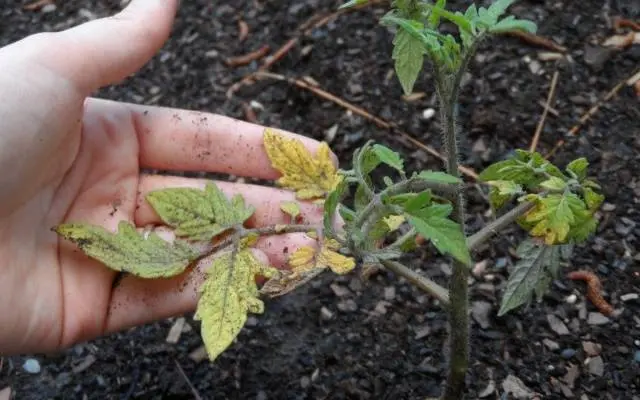
Why do tomato leaves turn yellow in the open field? You will get the answer to this question by reading this article. It will also include a video that will also cover this topic. To get rid of the yellowness of the leaves, you need to determine the original cause of this phenomenon, understand the characteristics of the soil and the climatic conditions in which tomatoes grow.
Causes of yellowing tomato leaves
Lack of space for the formation of the root system
The most common reason for the appearance of yellowing on the leaves is the lack of space for the development of the root system. Although it may seem that this problem only applies to planting tomatoes in greenhouses, it was not there. If you plant bushes in the open ground too close to each other in order to save space, then you will quite encounter the fact that the leaves of the tomatoes will turn yellow.
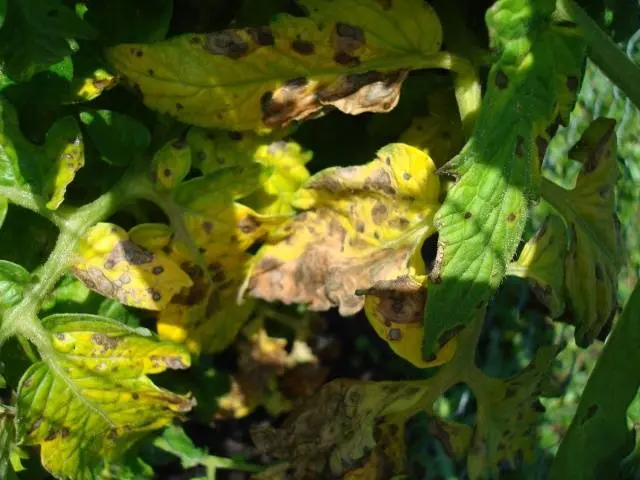
In addition, the leaves may turn yellow if the tomato seedlings have been growing in pots longer than necessary. The root system will also be weak if the seedlings are not thinned out after the first shoots appear. The fact is that the roots intensively develop in tomatoes already at the stage of growing seedlings, which is why it is important that there is enough space between the sprouts.
This is due to the fact that tomatoes spend all their energy on restoring the root system, and not on the growth and development of a healthy bush.
To avoid yellowing of tomato leaves in the open field, it is important to sow the seeds for seedlings in spacious containers. In addition, seedlings should be transplanted into open ground on time.
If you still did not have time to transplant in a timely manner and the roots have already grown strongly, then after planting the seedlings, you need to feed it immediately. To do this, you can use salt fertilizers with the addition of chlorides, phosphates and nitrates. Fertilizer concentration should not exceed 1%. In this case, the leaves should not begin to turn yellow.

If you do not have information about fertilizer concentrate, then you need to make a weaker solution so as not to overdo it. So, for 1 liter of water there are 10 ml of liquid fertilizers. If you make a very strong concentrate, then there is a high probability that you will burn the tomato bushes and, in addition to the fact that the leaves do not stop turning yellow, they may even die.
Soil scarcity
One of the equally common reasons why the leaves of tomatoes turn yellow is the scarcity of the soil. So, there may be a lack of nitrogen. If this problem is not eliminated, then over time the stem of the plant will become weak and thin, as the bush will intensively stretch upwards. In this case, the color of the leaves will be pale and there will be few of them on the bush. Initially, small yellow-brown spots will appear on the tip of the leaflet, uniting over time into one line. The end of all this will be the slow death and fall of the leaves, which will lead to the complete death of the tomato bush.
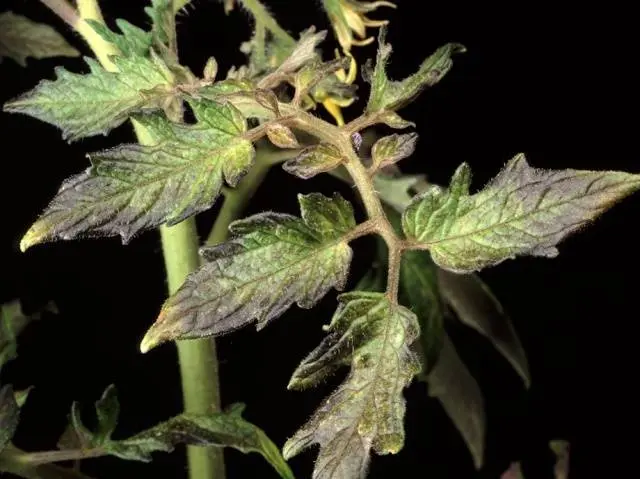
If there is little magnesium in the soil, then the leaves will begin to turn yellow between the veins. Subsequently, they will begin to twist and bulge upward. There is also a lack of molybdenum, however, the lack of this trace element is extremely rare. Weakly saturated color of young green leaves may indicate a lack of sulfur in the soil. At the same time, adult leaves begin to turn yellow, and their veins acquire a red tint. If the problem is not solved, then over time, not only the leaves will suffer, but the stem will also become fragile and weak.
Lack of iron leads to iron chlorosis. The leaves become pale yellowish with green veins. In this case, the growth of the bush stops and with inactivity, even the apical leaves become pale.
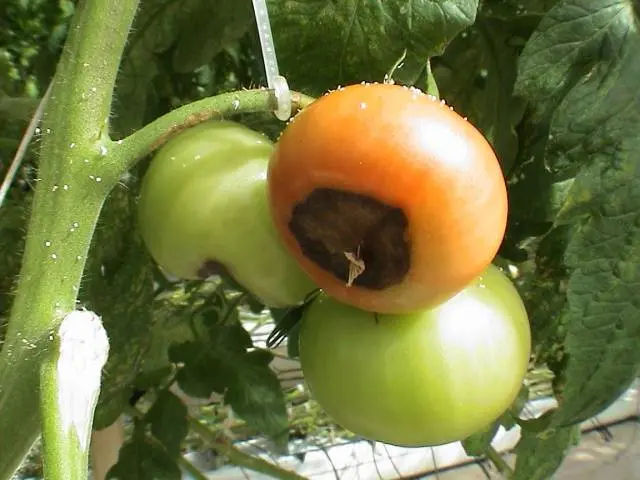
With a lack of calcium, light yellow spots appear on the leaves, and the fruits deteriorate due to vertex rot. But even worse, the rot is passed from fruit to fruit. So, the top of the tomato fruit turns brown and is squeezed inward. Such tomatoes are unsuitable for human consumption. They should be destroyed.
What to do?
If the soil lacks any trace elements, then, of course, fertilizers must be added to it, which contains the missing chemical element. For example, nitrogen starvation can be eliminated by spraying with urea. To do this, prepare a solution in proportion – 1 tbsp. l. urea per 10 liters of water.
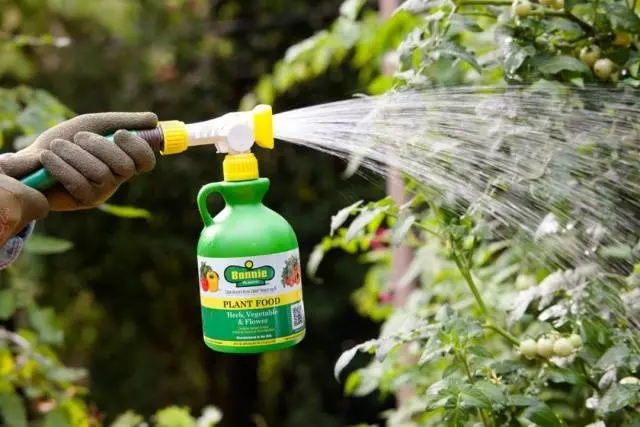
To replenish nitrogen, you can also add a solution of cow dung infusion to the soil. To do this, soak the mullein in water at the rate of 1:4 for 3 days. Then dilute the mullein infusion in a ratio of 1:3. Under each bush you need to add 1 liter of solution.
The lack of potassium is replenished by adding potassium nitrate to the soil. To spray the leaves of the plant, you need to dilute 1 tsp. fertilizer per 1 liter of water. To water the bush, dilute 1 tbsp. l. potassium nitrate in 10 liters of water. The lack of potassium can also be filled with wood ash.
Water scarcity
Another reason that the leaves turn yellow prematurely is the lack of water in the soil. Tritely improperly organized watering can lead to the fact that the leaves of the tomato bush become yellowed. Although tomato bushes are very drought tolerant, if left unattended for a long time, they will begin to turn yellow.

It is better to water tomatoes infrequently, but plentifully. The root of the bush, with the normal development of the root system, reaches a depth of up to 1 m. This means that the plant is provided with water and nutrients from a fairly large depth, to which many other crops cannot reach. The conclusion is simple, if the tomatoes lack water, then they just need to be well watered so that the leaves stop turning yellow.
Damage to seedlings during transplantation
The appearance of a painful yellow color after transplanting tomatoes into open ground may indicate that the seedlings were damaged during transplantation. In addition, adult bushes can suffer from inaccurate loosening, which can also lead to yellow leaves.
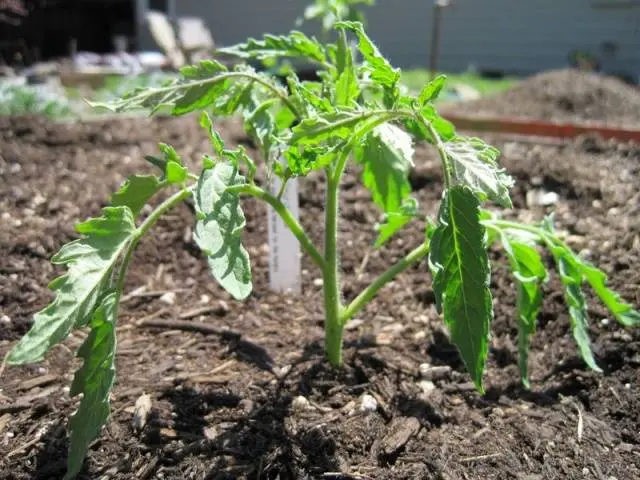
In this case, the lower leaves turn yellow. All that is needed to eliminate the problem is to give the plant time to recover. With decent care and the absence of other negative factors, soon the tomato leaves themselves will acquire a healthy color.
Fungal infection
Due to the spread of the fungus, tomato leaves may begin to turn yellow. Such infections usually hide in the ground, which means that a lot of effort will need to be made to eliminate the problem. If there is a suspicion that the soil is infected, then the earth should be digged in the fall. At the same time, you need to dig the earth as deep as possible. In this case, the chance of infecting plants next year will be much lower.

Not only soil can be infected, but also seeds, and even country tools used for cultivating the land. If we are talking about infection with inventory, then you can not use tools from an infected place on the ground to a healthy one. These precautions are designed to stop the spread of the infection throughout the site. In addition, thorough sanitization of the entire instrument may be necessary.
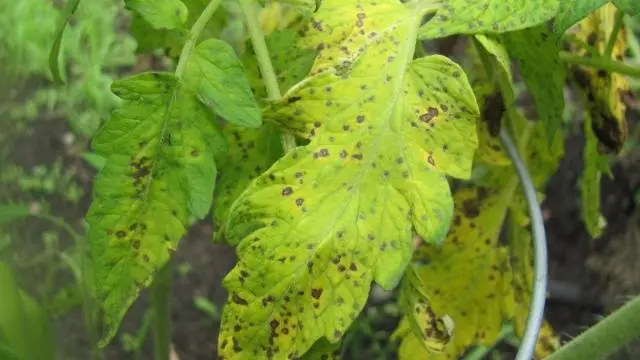
Fungal infections of tomatoes can occur at any stage of their growth. A rapidly developing fungal infection can lead to yellow leaves, weakening of the bush and poor yields. Fighting a fungus is very difficult, even, one might say, unrealistic. Therefore, the gardener needs to monitor the condition of the soil almost all year round. The seeds should be kept clean and the tool should be disinfected from time to time.
The most common fungal infection is Fusarium. When the bush is affected by this fungus, the leaves turn yellow and wither, as if after a drought. Spraying the leaves of tomatoes with special preparations every 1-12 days (depending on the severity of the disease), you can get rid of the infection. The most effective means in the fight against fungal infections are currently considered “Fitosporin” and “Fitocide”.
Hypothermia when planting seedlings in open ground
When transplanting seedlings into open ground, yellow leaves may appear on it. One of the reasons may be hypothermia. Tomatoes can be transplanted outdoors if the temperature at night does not fall below +12ºС.
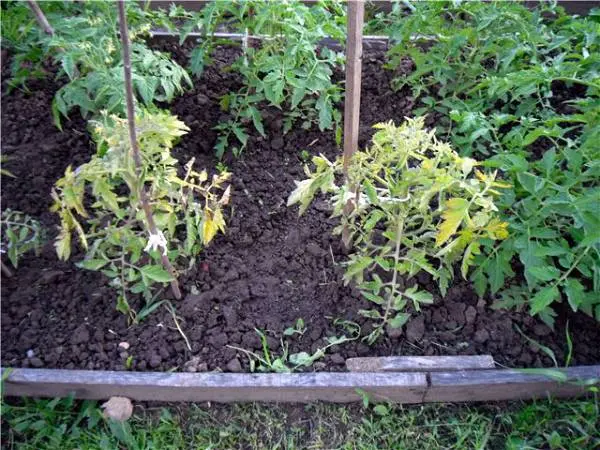
The impact of low temperatures on tomatoes leads to negative consequences:
- Root depletion.
- Underdevelopment of the root system.
- Lack of nutrition of the bush.
- Slow growth and development of the bush.
If the bushes are frozen, the leaves will turn yellow with a blue tint. The harvest of such tomatoes will be later, the fruits will be small in size and will not have a pronounced taste. To avoid this, do not rush to transplant seedlings into open ground.
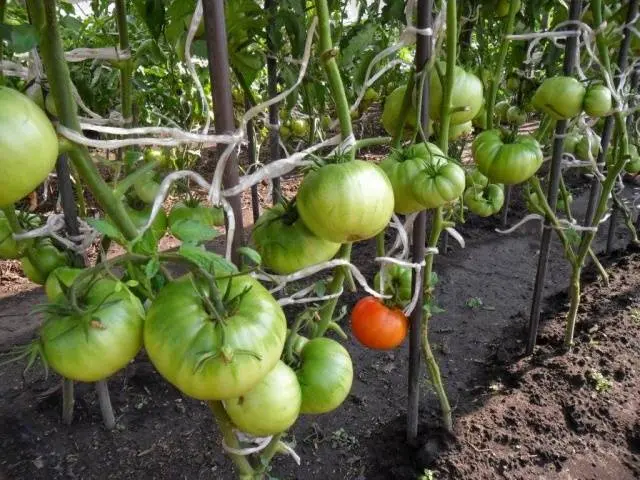
Results
So, if the leaves of tomatoes in your beds began to turn yellow, then determine the cause of this phenomenon. Then eliminate it and over time the leaves will turn green again. The tips provided in this article will help you identify the problem and neutralize its consequences.
We bring to your attention a video that also mentions common causes of yellow leaves and gives tips on how to eliminate them:









